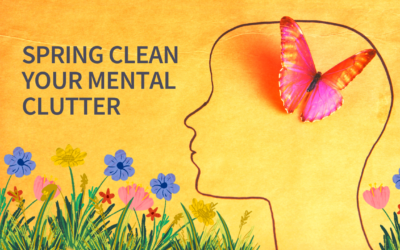Have you ever tried to catch a ball while holding something? It doesn’t work very well.
The best way to catch a ball is to have empty hands that are open in anticipation to receive it.
It’s the same with physical stuff, like, literally.
The drawer that’s too full of old rock concert t-shirts has no room for new rock concert t-shirts.
The cycle of possessions is: receive – release – receive – release.
Many people never learned this cycle. Most of what we know about releasing possessions came from the example we witnessed as a child. You either follow that example or rebel and do the opposite.
Situation #1
Let’s say you grew up in a home where your mother kept none of your artwork, where toys were sent to another family once you outgrew them. Perhaps you moved frequently and you learned to never get too attached to anything or anyone.
If this was your upbringing, you might find yourself hanging on to most everything: subway ticket stubs, every card you received as an adult, ALL of your children’s school papers, children’s toys you are saving for your grandkids (never mind that your kids are still in middle school), an empty Coke can that has your name on the side, and other belongings that you feel compelled to keep.
You’re not sure why you do this. You tell yourself you are “too sentimental.” Things pile up. You wonder if it’s too much saving. Your family’s current stuff is crowded out, but you have no idea how to let go of the older stuff. Being “too sentimental” feels impossible to shift.
Situation #2
This household had no room for little you. Stuff spilled out from cabinets. The household was a free-for-all. One parent was home all the time, busy with her own concerns. The other parent never seemed to be home because of work. You wondered if he was not around on purpose.
In middle school, you tried to keep your room in order. Beyond its doors, though, you walked into a different reality, dodging piles of dirty clothes or dropped wrappers. There was a small space for you on the floor in front of the television. The sofa and chairs were filled and you got in trouble if you moved that stuff.
You had no idea that this was not normal until you went to a friend’s house. After that, you knew you could NEVER have friends over.
You swore that when you had your own home, everything would be neat, clean, open and orderly.
And that’s what you have done. You follow a strict rule of getting rid of something if you have not used it in two months. You do not go to bed without every surface clear. You vacuum daily. Your children have room inspections. Each year they get to keep three pieces of artwork that they made at school. Their clothes and toys are donated as soon as they grow out of them.
Everything is neat and clear. Even having the mixer stay on the counter feels messy. Every day you fight the mess, sometimes staying up past midnight. It takes a lot of energy. Spending quality time with your kids would be easier if they just followed the rules. The battle is never ending.
Do you see yourself in either scenario?
Are you trapped in feeling “too sentimental” or in fighting obsessively for the absence of stuff?
Each of the above situations shares an important theme: not knowing how to navigate the cycle of possessions.
In the absence of explicit instruction about releasing and receiving, we live by rules the do the same or the opposite of what we implicitly learned as children.
When you were a kid, did anyone explain to you how to let something go in a way that felt good?
Probably not.
Learning how to release
In my book, Who Am I Now? Realign Your Home and Life, I teach the process of letting go. The process involves becoming aware of the unconscious rules about stuff that we carry into adulthood.
Because the rules are unconscious, they drive our behavior.
Then, we marvel at why we act like we do and why changing habits is so hard.
It’s hard because we try to skip the step that examines the belief that created the behavior.
You can’t skip this step.
Learning how to receive
The too full home of situation #1 and the anxiety-filled mental space of situation #2 leave little space for receiving.
The good things in life—most importantly, peace of mind—cannot be accessed by the women in either situation because they have not learned how to release what is not serving them.
Would you like to learn?
If this is your struggle, I invite you to join the community I am building on Facebook in my free group, Make Space for Abundance. You can join here: https://www.facebook.com/groups/makespaceforabundance
You can subscribe to my weekly videos on my YouTube channel: https://www.youtube.com/channel/UCnzXT1-fJZRBl_jlB3_3Wxg
Can’t wait to join you on your journey to release and receive.




